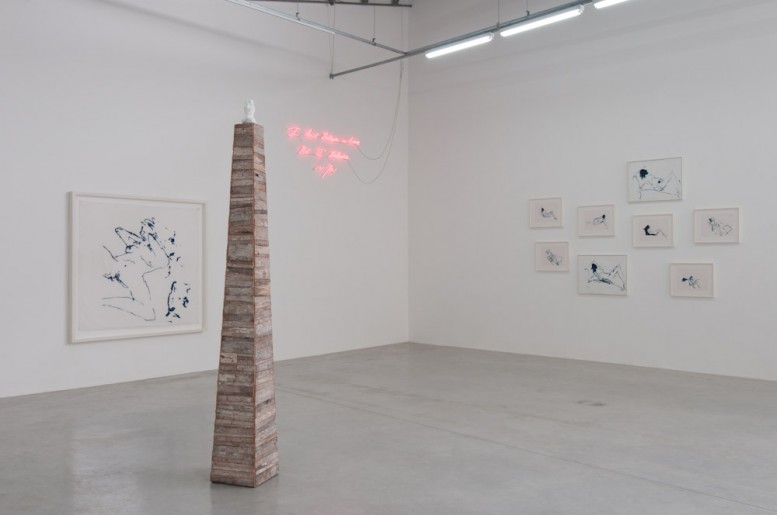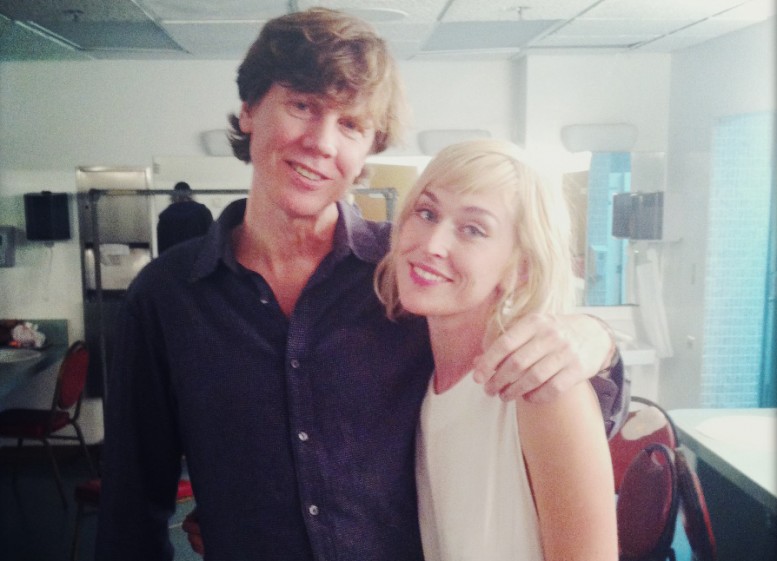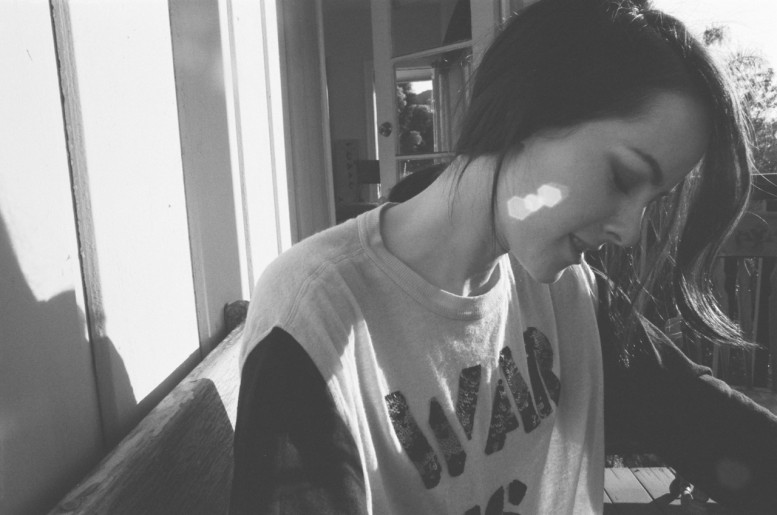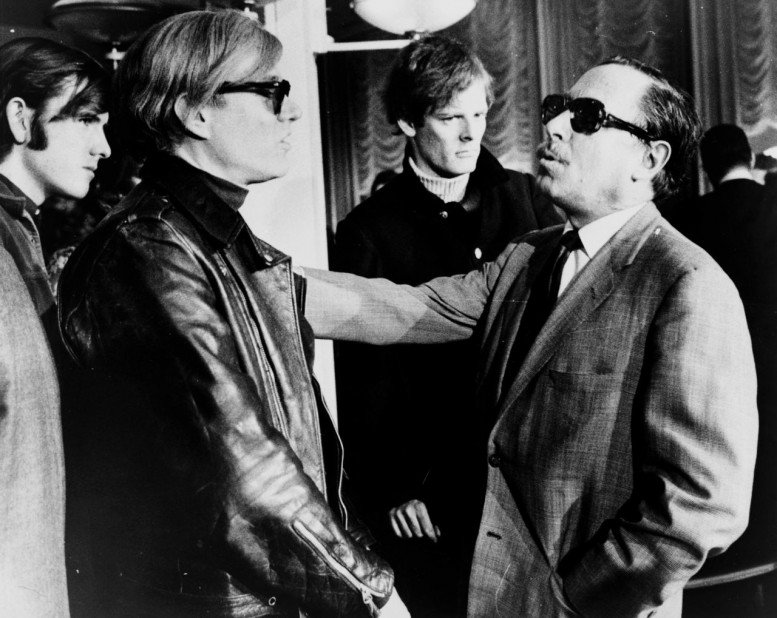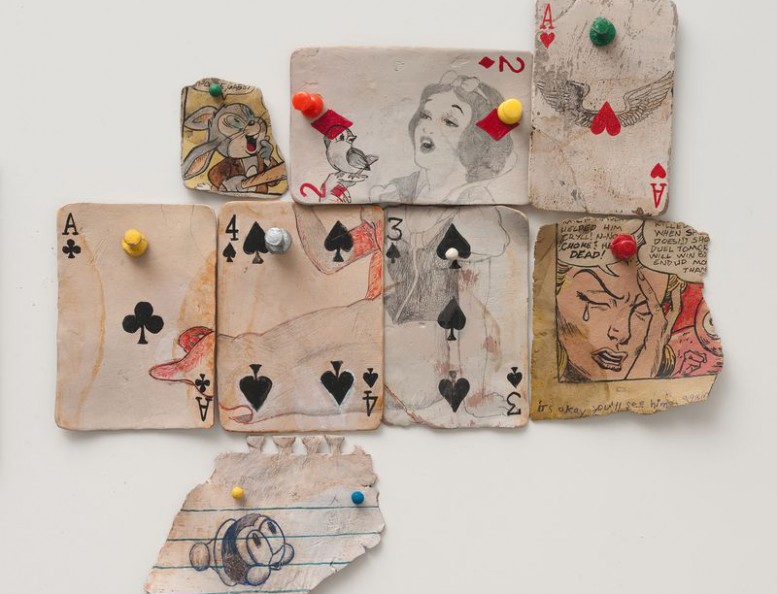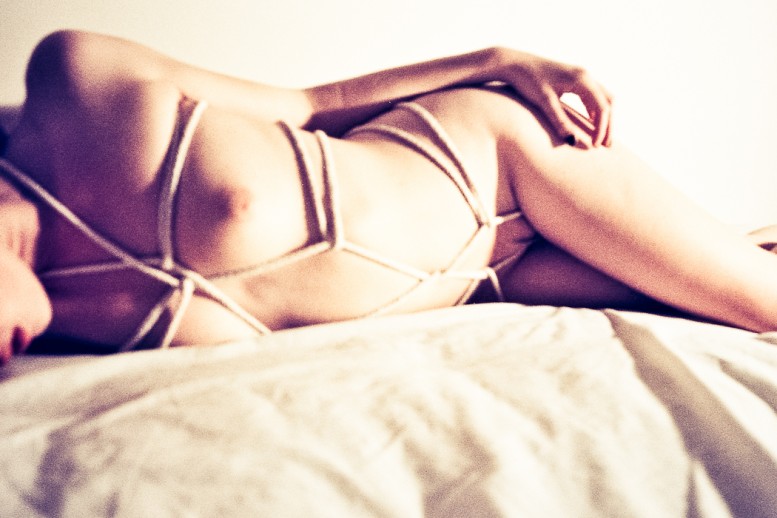Oxycontin to cure the common cold? Read the second installment of writer Max Barrie's slightly deranged and poetic non-fiction short story series. On top of writing about his life in L.A., he also illustrates his life using a combination of mediums to create a wicked portrayal of Los Angeles as a land of greed and guilt...crime and punishment. Click here to read the latest installment of his short story series A Trendy Tragedy.
Russian Criminal Tattoo Police Files @ Grimaldi Gavin
Russian Criminal Tattoo Police Files is a selection of photographs of Russian prisoners tattoos collected by Arkady Bronnikov between the mid-1960s and mid-1980s. A senior expert in criminalistics at the USSR Ministry of Internal Affairs for over thirty years, part of Bronnikov's duties involved visiting correctional institutions of the Ural and Siberia regions. It was here that he interviewed, gathered information and photographed convicts and their tattoos, building one of the most comprehensive archives of this phenomenon acquired by FUEL in 2013. Russian Criminal Tattoo Police Files is on view until November 30, 2014, at Grimaldi Gavin, 27 Albamarle Street, London.
Tracey Emin at White Cube in São Paulo
White Cube São Paulo presents its inaugural exhibition, You Don’t Believe in Love But I Believe in You by celebrated British artist Tracey Emin. A versatile modern-day expressionist, Emin’s intensely personal work blurs the boundaries between art and life. For this exhibition – her first in Brazil – she will present new works in a wide range of media including neons, sculptures, paintings, gouaches, monoprint drawings and embroideries. You Don’t Believe in Love But I Believe in You will be on view until February 23, 2013 at White Cube, Rua Agostinho Rodrigues Filho 550 Vila Mariana, São Paulo
Adarsha & Thurston Moore @ the Premier of Kurt
Adarsha Benjamin and Thurston Moore backstage at the Gusman Theater for the premier of Kurt. photograph by Adarsha Benjamin
[FIRST LOOK] Music Video for Casket Girls' Track Sleepwalking
Presenting the music video for Casket Girls' track Sleepwalking, shot and edited by Kevin Canavan entirely on a broken VHS camcorder. The Casket Girls are a new three-piece band hailing from Savannah, GA. Comprised of Ryan Graveface (Black Moth Super Rainbow, The Marshmallow Ghosts, Dreamend) who wrote and played all the song structures, and newcomers, Elsa and Phaedra Greene, who wrote and performed all of the vocals. On Sleepwalking, the band's first release, the unique collaboration bears to be more than the sum of its parts - as the girls' haunting and upbeat pop sensibility imbues Ryan's inspired instrumental musings with such a sense of purpose that you must wonder how one could exist without the other. But, The Casket Girls happened - as most things do - by accident. Ryan was visiting his future home, and in walking through one of the city's 22 squares, he happened upon two girls playing autoharp and singing bizarre songs. He watched from afar, eventually approaching them with the idea for the band. Ryan had been (and still is) obsessed with the Shangri-Las, and the sisters personified his desire of a far darker and more complex version of the 60s group.
[FASHION FILM] ANU
Directed by Kate Cox and Marnie Hollande, Anu (named after the Celtic goddess of fertility) is a fashion film for UK designer Aminaka Wilmont's Spring/Summer 2013 collection which is inspired by scent.
Ed Ruscha @ His Exhibition at the Kunsthaus Bregenz
Reading Ed Ruscha – an exhibition of artist Ed Ruscha's publications and printed media over his expansive career are currently on view at the Kunsthaus Bregenz in Austria until October 14. Photograph by Rudolf Sagmeister
Katie Eary Skateboards
Amazing skateboards by Katie Eary, inspired by her S/S 2013 Collection.
Women
Max Beckmann, Woman With Mandolin
A new exhibition at the Pinakothek der Moderne in Germany presents paintings of women by Picasso, Max Beckmann, and William De Kooning. On view until July 7.
Iconic
Directed by Skinny (Marc-Edouard Leon & David Hache) for German based DJ Moonbootica for the single Iconic. Stay tuned for the next issue of AUTRE out this week with an interview with Marc-Edouard Leon of Skinny.
Jena Malone for AUTRE
The inspiring and beautiful Jena Malone at home in Los Angeles, CA, from the upcoming Autre Issue 002 : The Future is Now. photograph by Adarsha Benjamin
Cindy Sherman Retrospective
Cindy Sherman (American, b. 1954) is widely recognized as one of the most important and influential artists in contemporary art. Throughout her career, she has presented a sustained, eloquent, and provocative exploration of the construction of contemporary identity and the nature of representation, drawn from the unlimited supply of images from movies, TV, magazines, the Internet, and art history. Working as her own model for more than 30 years, Sherman has captured herself in a range of guises and personas which are at turns amusing and disturbing, distasteful and affecting. A retrospective at the Museum of Contemporary Art in New York, on view starting February 26, brings together more than 170 photographs and traces the artist’s career from the mid 1970s to the present.
Warhol & Tennessee Williams
Lazy Jeanne
Fashion film for Paris based creative agency and fashion brand Surface to Air's Summer 2012 collection directed by Jérémie Rozan and starring Jeanne Damas
Snow White in Evening Wear
Snow White in Evening Wear and Other Works by artist Kristen Morgin, on view until March 10 at Marc Selwyn Gallery in Los Angeles.
Painkiller
Painkiller is an original exhibition of 48 Polaroid images by groundbreaking photographer Robert Frank taken from the 1970s through the present. Blue Sky gallery in Portland closely collaborated with Frank in selecting photographs to be reproduced in a special series of enlarged prints for this show. Considered one of the most influential figures in the history of photography, Frank has redefined the aesthetic of both the still and the moving image via his pictures and films. Blue Sky presents Frank’s work again in Portland, having first shown his photographs in 1981. Painkiller closes this week at the Blue Sky Gallery in Portland, Oregon.
Blue Notes in Black and White
 Louis Armstrong, 1960
Louis Armstrong, 1960
Miles Davis, supremely cool behind his shades. Billie Holiday, eyes closed and head tilted back in full cry. John Coltrane, one hand behind his neck and a finger held pensively to his lips. These iconic images have captivated jazz fans nearly as much as the music has. Jazz photographs are visual landmarks in American history, acting as both a reflection and a vital part of African American culture in a time of immense upheaval, conflict, and celebration. Charting the development of jazz photography from the swing era of the 1930s to the rise of black nationalism in the ’60s, Blue Notes in Black and White is the first of its kind: a fascinating account of the partnership between two of the twentieth century’s most innovative art forms.


